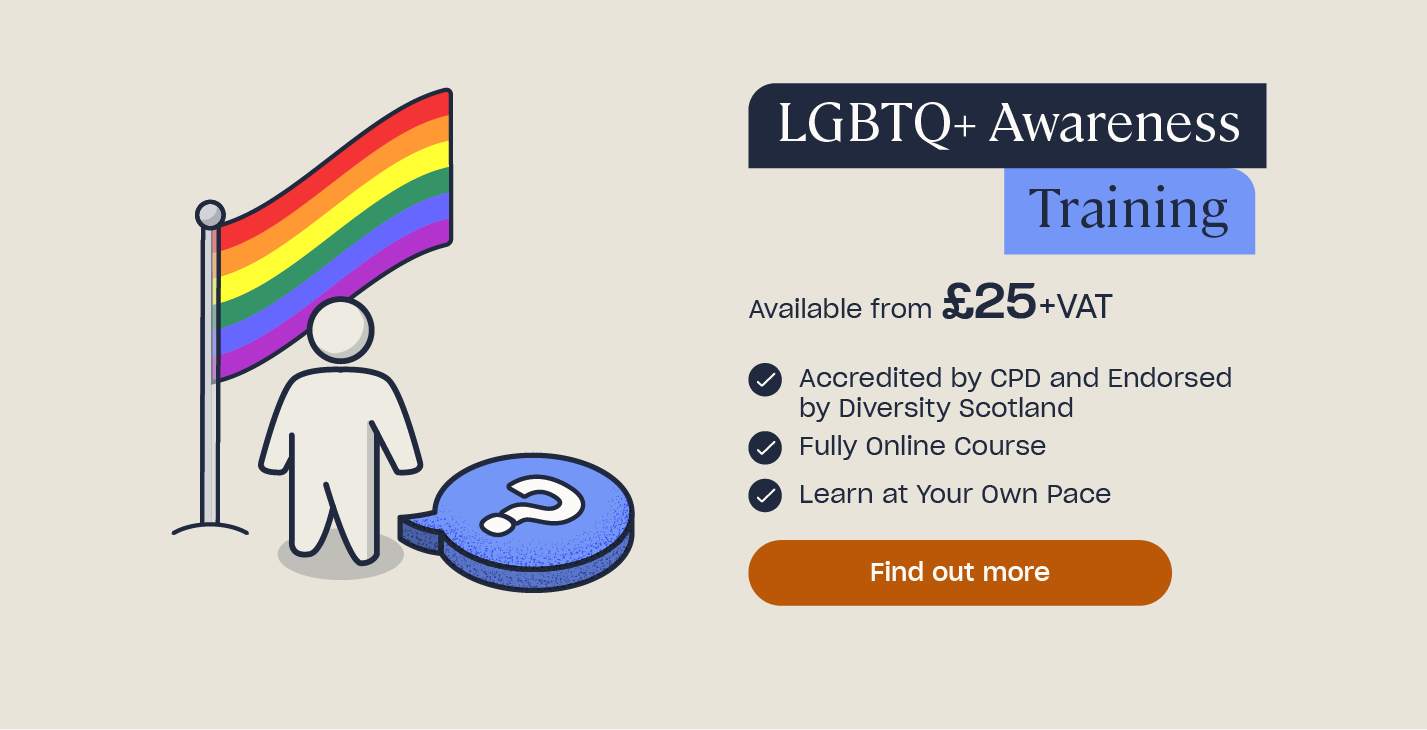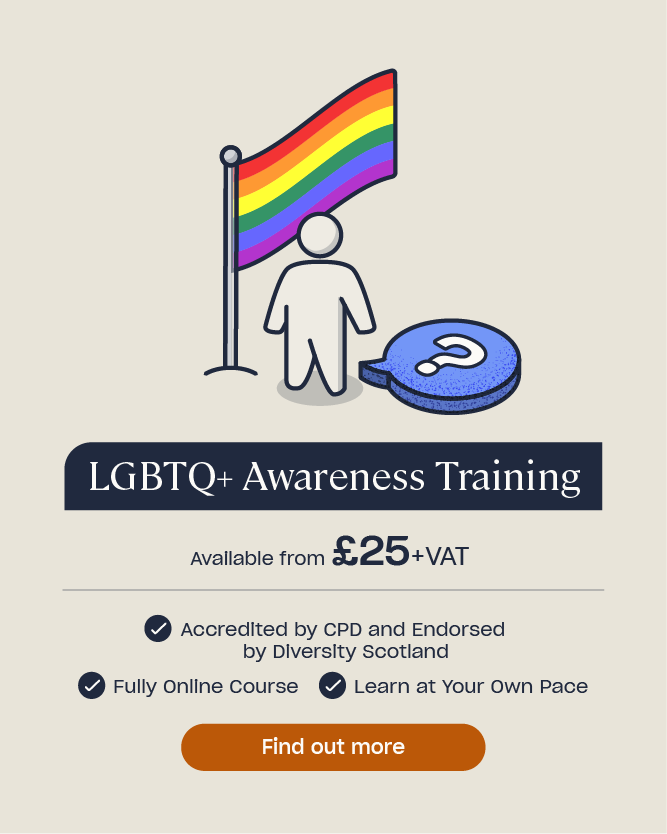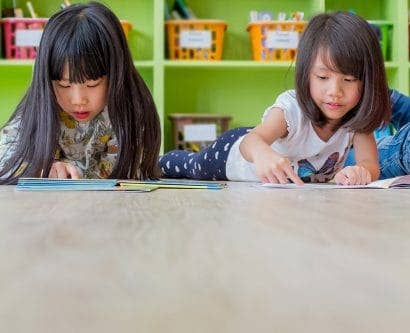How to Promote LGBTQ+ Inclusive Education in Schools
For education to be inclusive, children and young people need to see themselves, their families, and their experiences acknowledged and reflected positively – both in the messages that their school culture promotes and reinforces, and through the content of curriculum itself.
This article looks at how we can increase that inclusivity for children and young people who identify as LGBTQ+ (lesbian, gay, bisexual, trans, queer/questioning, and other sexual and gender identities).
In this article we will look at what issues might be facing LGBTQ+ children and young people at school, strategies to provide support for those issues, and how to establish a more inclusive whole-school culture and curriculum.
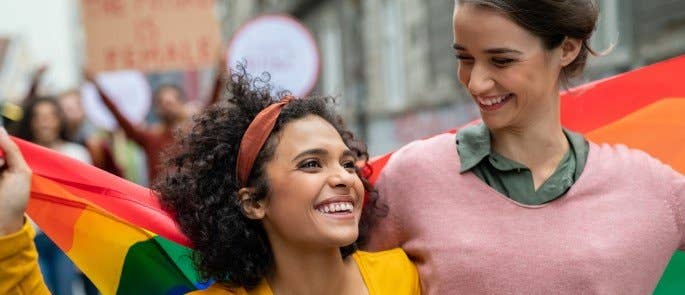
LGBTQ+ Issues in School
Government research shows that the experiences of individuals who identify as LGBTQ+ are still disproportionately difficult within UK society. The resulting government action plan highlighted the importance of improving educational experiences for LGBTQ+ young people.
Whilst some schools are providing LGBTQ+ young people with a supportive environment, where they feel safe and respected, unfortunately this is not everyone’s experience.
Recent research by Just Like Us revealed that:
- Only 58% of LGBTQ+ pupils have felt safe at school on a daily basis in the past 12 months, compared to 73% of non-LGBTQ+ pupils.
- Only a third of LGBTQ+ pupils say there is a clear process for reporting anti-LGBTQ+ bullying in their school.
- 48% had not seen any positive messaging about being LGBTQ+ from their school in the last 12 months.
- LGBTQ+ young people are three times more likely to self-harm and twice as likely to have depression, anxiety, and panic attacks, as well as to be lonely and worry about their mental health on a daily basis.
- LGBTQ+ young people (68%) are twice as likely to contemplate suicide than their non-LGBTQ+ peers (29%).
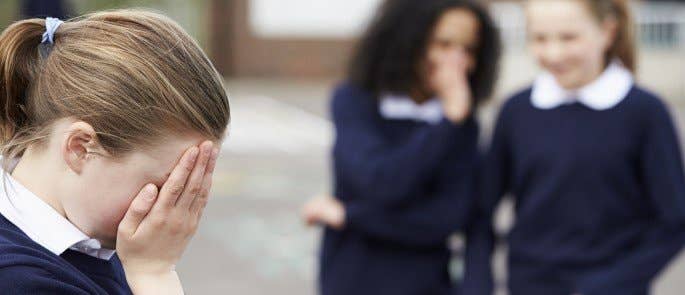
These issues are not only found in secondary schools. A report on homophobic bullying found that in primary settings:
- Seven out of ten primary schools teachers reported hearing the use of homophobic language, such as “that’s so gay” or “you’re so gay”.
- Almost half of respondents reported that their pupils were experiencing homophobic bullying. Respondents often linked this to gender stereotyping, with children being victimised for not conforming to their peers’ notions of gender roles.
As these findings show, for many young LGBTQ+ people, school can be a negative experience which impacts on their self-esteem and mental health.

Want to learn more?
Our Child Mental Health Training provides you with a detailed understanding of child mental health, including how to identify and support a child who may be struggling, and how to promote positive mental health and wellbeing.
There is a danger that such children will become disengaged with education and not fulfil their potential.
However, as the Stonewall School Report 2017 confirmed, pupils who are taught positively about LGBTQ+ issues are much more likely to feel welcome, included, and experience higher levels of both attainment and wellbeing. This means that, as educators, we have the power to improve those figures mentioned above.
What is LGBTQ+ Inclusion?
Positive reinforcement, through inclusion, can help shape how young people feel about themselves and how they view others. Encountering diversity and inclusivity at school is critical, as it is during these years that we learn most about ourselves and the world around us.
By embedding a culture of positive messaging and curriculum visibility regarding LGBTQ+ identities and issues, it will not only promote the wellbeing of those who identify as such, but also promote empathy, tolerance, and respect throughout the school population.

By teaching children to be good LGBTQ+ allies from a young age, schools can help tackle the homophobic, biphobic, and transphobic discrimination that is unfortunately still present in society.
Legal Requirements
Providing an inclusive educational experience for LGBTQ+ children and young people, or those with LGBTQ+ family members, is not a ‘nice to have’ – it is a legal responsibility which schools need to fulfil.
Gender reassignment and sexual identity are among the nine protected characteristics under The Equality Act 2010. Under the public sector equality duty of this act, schools must have due regard to the need to:
- Eliminate discrimination, harassment, victimisation, and any other conduct that is prohibited by or under the Act.
- Advance equality of opportunity between persons who share a relevant protected characteristic and persons who do not share it.
- Foster good relations between persons who share a relevant protected characteristic and persons who do not share it.
Many schools and colleges have already made great strides towards ensuring that their policies, culture and curriculum take this into account. However, with LGBTQ+ children and young people being twice as likely to be bullied than their non-LGBTQ+ peers, there is still work to be done.
Achieving LGBTQ+ inclusive education consists of two main elements:
- LGBTQ+ inclusion in the curriculum content.
- Promoting positive messaging and addressing discrimination within the school culture.
What is an LGBTQ+ Inclusive Curriculum?
Between 1988 and 2003, due to Clause 28, it was illegal for schools in England to “intentionally promote homosexuality or publish material with the intention of promoting homosexuality” or “promote the teaching in any maintained school of the acceptability of homosexuality as a pretended family relationship”. This meant that LGBTQ+ identities and issues were completely absent from the curriculum, with teachers being unable to discuss them.
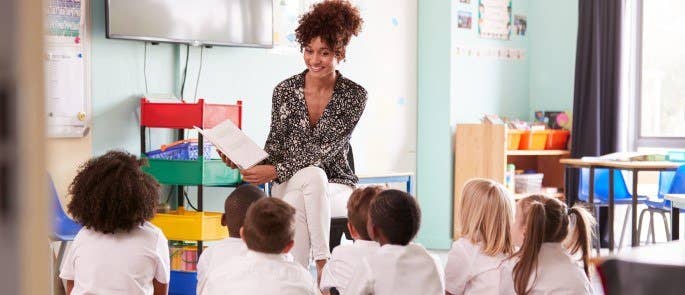
The curriculum has come a long way since then. The Relationships Education (primary) and Sex and Relationships Education (secondary) statutory guidelines now include learning outcomes throughout the key stages which reflect the experiences of those who identify as LGBTQ+ and/or those growing up within LGBTQ+ families. It also carries the statutory requirement to make sure that the needs of LGBTQ+ children and young people are appropriately met and that all pupils understand the importance of equality and respect.
The guidelines state:
- “LGBT content should be fully integrated into schools’ programmes of study for this area of the curriculum rather than delivered as a standalone unit or lesson.
- All pupils are expected to have been taught LGBT content at a timely point as part of this area of the curriculum.”
However, in order to make sure all pupils are reflected, represented, and helped to reach their full potential, schools should aim to go beyond the statutory curriculum content to promote LGBTQ+ inclusivity.
In September 2021, Scotland became the first country to embed LGBTQ+ inclusive education throughout the curriculum, providing training and resources for teachers to help achieve this.
Top Tips for Creating an LGBTQ+ Inclusive Curriculum
The following strategies and tips can be used, in addition to the statutory RSE content, to help embed inclusivity throughout the curriculum.
Try to incorporate LGBTQ+ figures and issues in your planning.
- Include aspects of LGBTQ+ history – for example, when studying movements for social reform, include gay rights movements such as Stonewall and Pride.
- Increase visibility of prominent LGBTQ+ individuals within all areas of the curriculum. When choosing sporting figures, authors, historical figures, scientists, artists, etc. to study, try to ensure visibility of LGBTQ+ figures – consider including Tom Daly, Virginia Woolf, Marsha P. Johnson, Alan Turing, Frida Kahlo, etc., for example.
- You might include more focused planning around times in the school year that coincide with awareness events such as LGBTQ+ History Month in February or Pride Month in June. However, do be aware that if these are the only exposure to LGBTQ+ topics then this can lead to a feeling of fragmentation – they need to be part of a whole-school, year-long culture of inclusion.
Challenge gender stereotypes and celebrate difference.
This should be done from day one of an individual’s school journey.
- In early years and beyond, look at your setting and see if the environment is unwittingly reinforcing any stereotypes. In displays, role play areas, small world toys, reading books, etc., you should strive to avoid gender stereotyping and represent diversity.
- Stereotypes can increase the risk of bullying and abuse. The statutory relationships curriculum seeks to address this by teaching children from a young age about healthy relationships. See our Hub article for further detail.
- Remember to examine your own language and/or expectations. We can often promote messaging that we are perhaps unaware of. Are you treating all pupils the same? Are your expectations different in terms of behaviour, or activities that will appeal?
Increase representation in your resources.
This can be done in a variety of ways.
- Increase children and young people’s access to stories that feature LGBTQ+ characters and narratives. This can be in studied texts, class stories at primary level, and in the books available in libraries for children to read for pleasure.
- When writing resources, such as mathematics problems, include references which reflect LGBTQ+ experiences. For example, Ash ate one quarter of a pizza. Ash’s mums then shared the rest. What fraction of the pizza did they each eat? Incorporating such scenarios into problems, foreign language vocabulary and practice conversations, or reading comprehension is a very simple way to include diverse experiences in everyday resources.
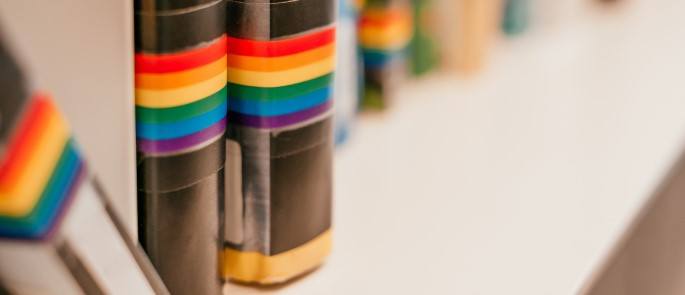
Stonewall have produced some detailed ‘Getting Started’ guides for different age groups with practical guidance on building an LGBTQ+ inclusive curriculum. These can be found here along with other teaching resources.
How to Support LGBTQ+ Students in School
Here we will consider some strategies for the second strand of LGBTQ+ inclusion: promoting positive messaging and addressing discrimination within the school culture.
Have the relevant policies in place.
- Make sure that you communicate the school’s commitment to preventing discrimination, including anti-LQBTQ+ bullying (online and offline) within the relevant policies – anti-bullying, behaviour, online safety, and safeguarding policies. Some schools may also have a dedicated LGBTQ+ policy.
- Share policies regularly with staff, pupils, and parents or carers.
- Ask parents, carers, and pupils to sign up to the anti-bullying policy and include details regarding your expectations that they treat everyone equally and with respect in any home-school agreements.
It is a requirement that all prejudice-based incidents are recorded, and need to be shared with Ofsted during any inspection.
Promote a zero-tolerance attitude to homophobic bullying and language.

- Have clear anti-bullying procedures in place. Ensure children know how they can report incidences of bullying, and feel that it will be taken seriously.
- Make sure children know that there are a range of trusted adults they can go to for support.
- Establish peer support in the form of anti-bullying ambassadors to give children an opportunity to access support in a different way.
- Have a consistent approach to recording and dealing with any incidents. Make sure all staff are aware of the procedure and that they respond to every incident.
- For incidences of homophobic language, preparing a ‘script’ of responses may help staff.
- Teach children, in age-appropriate terms, what words such as ‘gay’ actually mean. This helps to reinforce that these are not words to be used in a derogatory manner. Stonewall’s Getting Started Guides include useful glossaries of LGBTQ+ terms – separated into definitions for staff and age-appropriate explanations.
Unfortunately, many children may come across the use of this kind of language at home or outside of school. It is therefore vital that, within school, children are taught that using homophobic language is unacceptable.
Staff should also be aware that many young people who do not identify as LGBTQ+ are still subject to anti-LGBTQ+ bullying because they do not conform to their peers’ expectations of non-LGBTQ+ identities.
Support and train staff.
- Staff should be empowered to support LGBTQ+ young people, and to make their own practice LGBTQ+ inclusive. This may include accessing training in order that they feel confident in their own LGBTQ+ awareness, or specific training, for example, to address homophobic bullying.
- Many school staff who identify as LGBTQ+ do not do so openly within their workplace. By making the school LGBTQ+ inclusive for staff as well as pupils, eventually this should lead to young people seeing more LGBTQ+ role models amongst the staff.
- Many staff feel that communication with parents – especially if some parents are not open to the idea of LGBTQ+ education or inclusion – is something that they could use support with. By ensuring your staff are knowledgeable about the school’s policies, the legal requirements regarding equality, the statutory basis for curriculum content, and the reasons behind the promotion of tolerance and respect for all, they should feel empowered to respond to parents.
Establish LGBTQ+ student organisations.
Setting up groups for young people to come together in a safe space can have a positive effect on individuals. Once the organisation is set up, they can provide valuable pupil voice feedback as to what they are experiencing in school and any recommendations for improvements.

Signpost Support.
As part of the government’s ‘LGBT action plan’, schools should make sure they signpost support for LGBTQ+ young people, who may be experiencing bullying or wellbeing issues. This signposting should ideally be through a variety of media – including posters on notice boards, details on school websites, etc.
It should include details of support that young people can access in school, as well as outside of school.
The Trevor Project
The Trevor Project provides an online space where young LGBTQ+ people can access information and support 24/7. They have access to trained counsellors and provide crisis intervention and suicide prevention services to young people under 25.
Improving the experience of young people who identify as LGBTQ+ should be a priority in all schools. Whilst many schools are making progress towards that goal, it is clear that we still have a long way to go. It’s important to raise awareness of LGBTQ+ issues, take consistent measures to ensure positive whole-school cultures, and ensure appropriate representation within the curriculum.
Further Resources:
- Equality and Diversity Training Course
- Supporting Transgender Students in School: Guidance for Teachers
- LGBTQ+ Awareness Training
- The UK History of LGBTQ+: A Timeline of Important Events
- LGBT Awareness Quiz
- What is Inclusive Practice?
- Educational Bias: How to Avoid Bias in the Classroom
- How to Promote Positive Mental Health in Schools
- How to Promote Equality, Diversity & Inclusion in the Classroom
- Gender Dysphoria in Children: Guidance for Parents and Teachers


